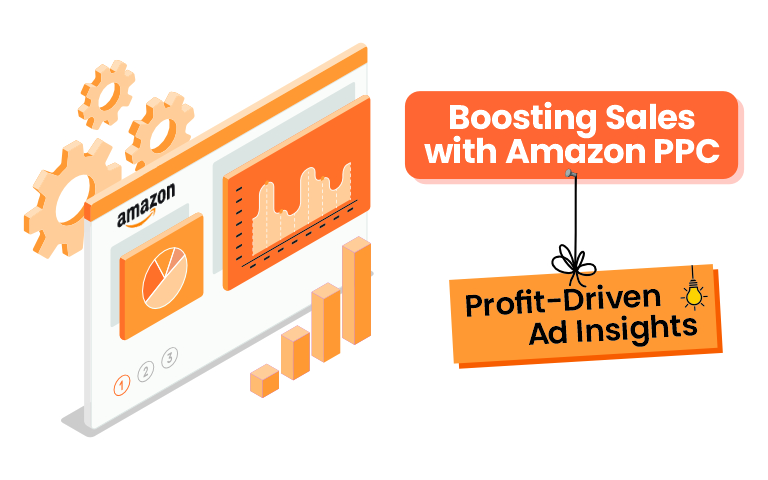Amazon PPC (Pay-Per-Click) advertising is one of the most effective ways to boost your product’s visibility and drive sales on the platform. With Amazon’s extensive reach and data-driven advertising capabilities, a well-executed PPC campaign can increase traffic, improve conversion rates, and position your brand for long-term success. This guide will take you through the essential steps for creating and optimizing Amazon PPC campaigns to maximize your e-commerce growth.
1. Understanding Amazon PPC Basics
Amazon PPC allows sellers to promote their products on Amazon’s search results and product pages through sponsored ads. These ads operate on a pay-per-click model, meaning you’re charged only when a shopper clicks on your ad. The main types of Amazon PPC campaigns include:
– **Sponsored Products**: Promote individual product listings, targeting keywords or products.
– **Sponsored Brands**: Showcase your brand with custom headlines and images, targeting keywords.
– **Sponsored Display**: Reach audiences on and off Amazon with display ads.
2. Setting Up Your First Amazon PPC Campaign
To create a successful PPC campaign, start by identifying your campaign goals. Do you want to increase visibility, boost sales, or drive brand awareness? Follow these steps to set up your first campaign:
– **Choose a Campaign Type**: Decide on Sponsored Products, Sponsored Brands, or Sponsored Display.
– **Select Keywords and Products**: Use Amazon’s keyword suggestion tool or tools like Helium 10 to find high-volume keywords relevant to your product.
– **Set Your Budget and Bids**: Define your daily budget and maximum bid for each keyword or product target. Start conservatively and adjust as you analyze performance.
3. Optimizing Keyword Targeting
Effective keyword targeting is crucial for PPC success. Consider these targeting types:
– **Broad Match**: Targets variations of your keyword, including synonyms and related terms.
– **Phrase Match**: Targets keywords in the exact order they appear.
– **Exact Match**: Targets the exact term with no variation.
Use a mix of targeting types to maximize visibility while maintaining relevance. Monitor your keywords and add negative keywords to filter out irrelevant clicks.
4. Analyzing and Adjusting Campaign Performance
Regularly reviewing your campaign performance is essential to optimize spending and maximize returns. Key metrics to track include:
– **Click-Through Rate (CTR)**: Measures how often people click on your ad after seeing it.
– **Conversion Rate**: Shows the percentage of clicks that resulted in a purchase.
– **ACOS (Advertising Cost of Sales)**: Calculates ad spend as a percentage of sales.
Based on these metrics, adjust your bids, pause underperforming keywords, and allocate more budget to high-performing ones.
5. Leveraging Automatic and Manual Campaigns
Amazon offers two types of campaigns: automatic and manual.
– **Automatic Campaigns**: Amazon selects keywords for you based on your listing and relevant search terms. Great for discovering new keywords.
– **Manual Campaigns**: You select keywords, giving you more control over targeting and spending.
Many successful sellers run both campaign types simultaneously, using automatic campaigns for keyword discovery and manual campaigns for refined targeting.
6. Strategies to Improve ACOS and ROAS
To make the most of your PPC spend, focus on reducing ACOS and improving ROAS (Return on Ad Spend):
– **Bid Adjustments**: Lower bids on underperforming keywords and increase bids on high-converting ones.
– **Negative Keywords**: Add negative keywords to avoid irrelevant clicks and reduce wasted spend.
– **Campaign Segmentation**: Separate campaigns for different products to better control budget allocation.
7. Common Mistakes to Avoid
– **Not Adjusting Bids**: Regular bid adjustments are essential for optimizing performance.
– **Ignoring Negative Keywords**: Neglecting negative keywords can lead to wasted ad spend on irrelevant clicks.
– **Overlooking Seasonal Trends**: Seasonal trends affect demand. Adjust your campaigns to match fluctuations in demand.
Conclusion
Amazon PPC is a powerful tool for boosting sales and brand visibility, but successful campaigns require careful planning, continuous monitoring, and strategic adjustments. By understanding the basics, optimizing keywords, analyzing performance metrics, and avoiding common pitfalls, you can create a high-performing Amazon PPC campaign that drives growth for your e-commerce business. At Shark Labs, we help brands refine their Amazon PPC strategies, using data-driven insights to maximize ROI and achieve sustained success.

